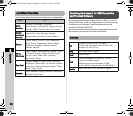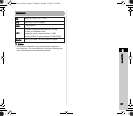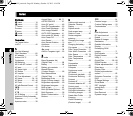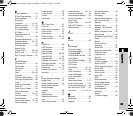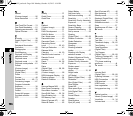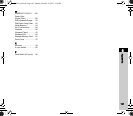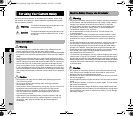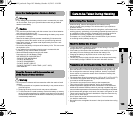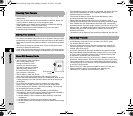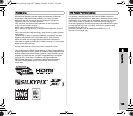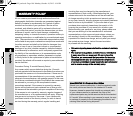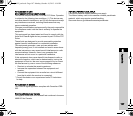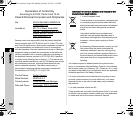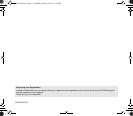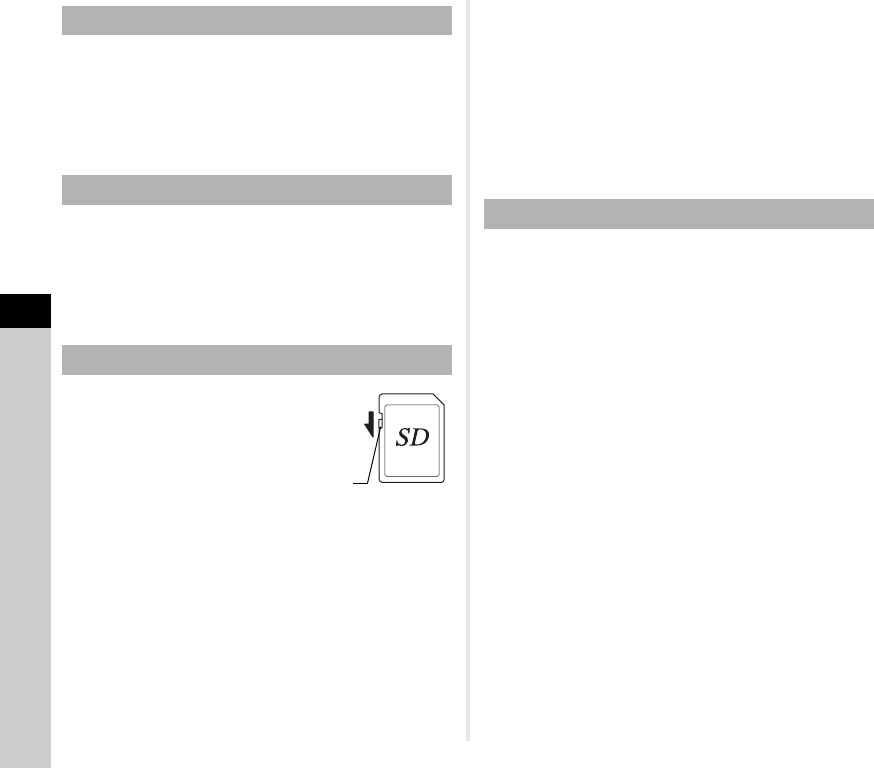
6
Appendix
104
• Do not clean the camera with organic solvents such as thinner, alcohol,
and benzine.
• Use a lens brush to remove dust accumulated on the lens. Never use
a spray blower for cleaning as it may damage the lens.
• Please contact your nearest service center for professional cleaning
of the CMOS sensor. (This will involve a fee.)
• Periodic inspections are recommended every one to two years
to maintain high performance.
• Do not store the camera with preservatives or chemicals. Storage in high
temperatures and high humidity can cause mold to grow on the camera.
Remove the camera from its case and store it in a dry and well-ventilated
place.
• Avoid using or storing the camera where it may be exposed to static
electricity or electrical interference.
• Avoid using or storing the camera in direct sunlight or in locations where
it may be exposed to rapid changes in temperature or to condensation.
• The SD Memory Card is equipped
with a write-protect switch.
Setting the switch to LOCK
prevents new data from being
recorded on the card, the stored
data from being deleted, and
the card from being formatted
by the camera or computer.
• The SD Memory Card may be hot
when removing the card immediately after using the camera.
• Do not remove the SD Memory Card or turn off the power while the card
is being accessed. This may cause the data to be lost or the card to
be damaged.
• Do not bend the SD Memory Card or subject it to violent impact.
Keep it away from water and store away from high temperatures.
• Do not remove the SD Memory Card while formatting. The card may
be damaged and become unusable.
• Data on the SD Memory Card may be deleted in the following
circumstances. We do not accept any liability for data that is deleted if
1. the SD Memory Card is mishandled by the user.
2. the SD Memory Card is exposed to static electricity or electrical
interference.
3. the SD Memory Card has not been used for a long time.
4. the SD Memory Card or the battery is removed while the card is being
accessed.
• If the SD Memory Card is not used for a long time, the data on the card
may become unreadable. Be sure to regularly make a backup of
important data on a computer.
• Format new SD Memory Cards. Also format SD Memory Cards
previously used with other cameras.
• Please note that deleting data stored on an SD Memory Card, or
formatting an SD Memory Card does not completely erase the original
data. Deleted files can sometimes be recovered using commercially
available software. If you are going to discard, give away or sell your SD
Memory Card, you should ensure that the data on the card is completely
deleted or the card itself is destroyed if it contains any personal or
sensitive information.
• The data on your SD Memory Card should be managed at your own risk.
• An SD Memory Card with a built-in wireless LAN (“Eye-Fi card”)
can be used with this camera.
• Use of an access point and an Internet connection are required for
transferring images via wireless LAN. For details, refer to the Eye-Fi
website. (http://www.eye.fi)
• Use Eye-Fi cards which have been updated to the newest firmware.
• Set [Action Mode] of [Wireless Memory Card] to [OFF], or do not use
an Eye-Fi card in a location where the use of wireless LAN devices
is restricted or prohibited, such as airplanes.
• Eye-Fi cards can be used only in the country in which the card was
purchased. Please observe all local laws governing Eye-Fi card usage.
• This camera features a function to enable/disable the communication
function of the Eye-Fi card, however, we do not guarantee the operability
of all Eye-Fi card functions.
• Refer to the Eye-Fi card manual for details on how to use the card.
• Please contact the Eye-Fi card manufacturer regarding any
malfunctions or problems concerning Eye-Fi cards.
Cleaning Your Camera
Storing Your Camera
About SD Memory Cards
Write-protect
switch
About Eye-Fi Cards
e_kb502_om.book Page 104 Monday, October 14, 2013 4:14 PM



